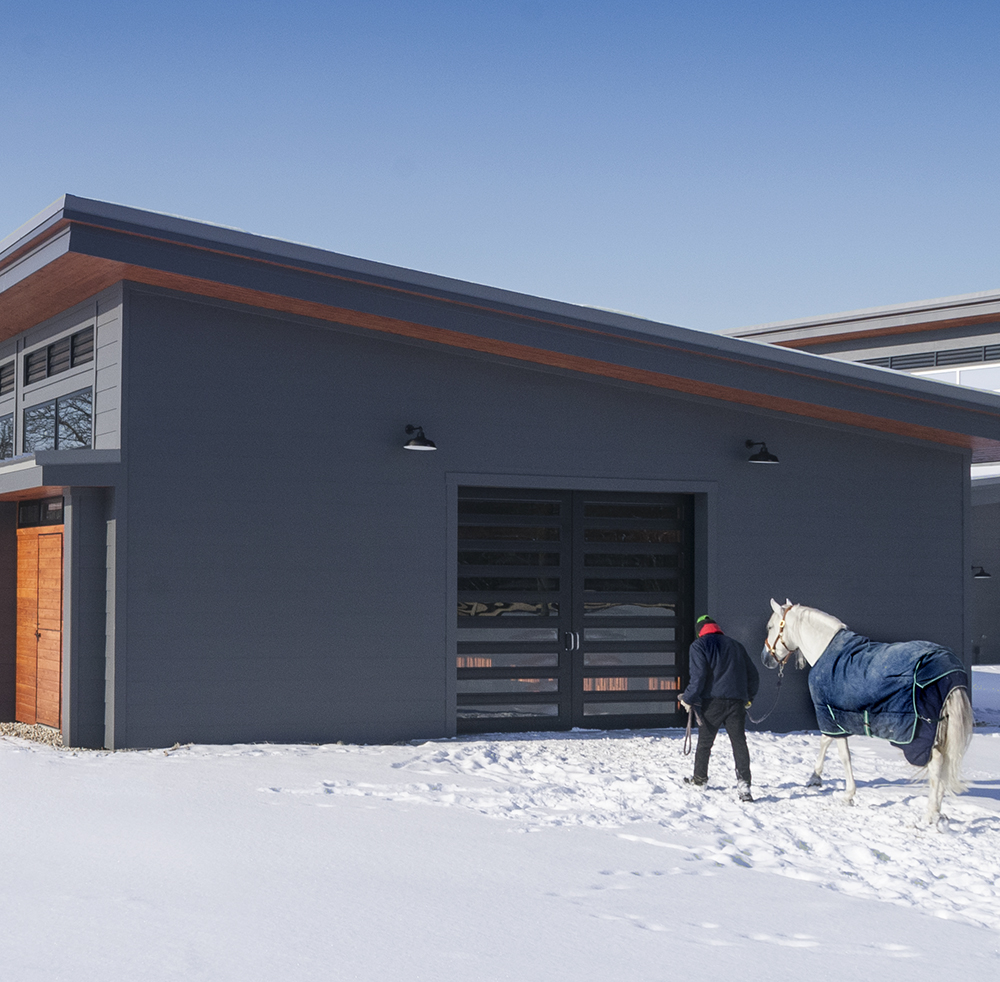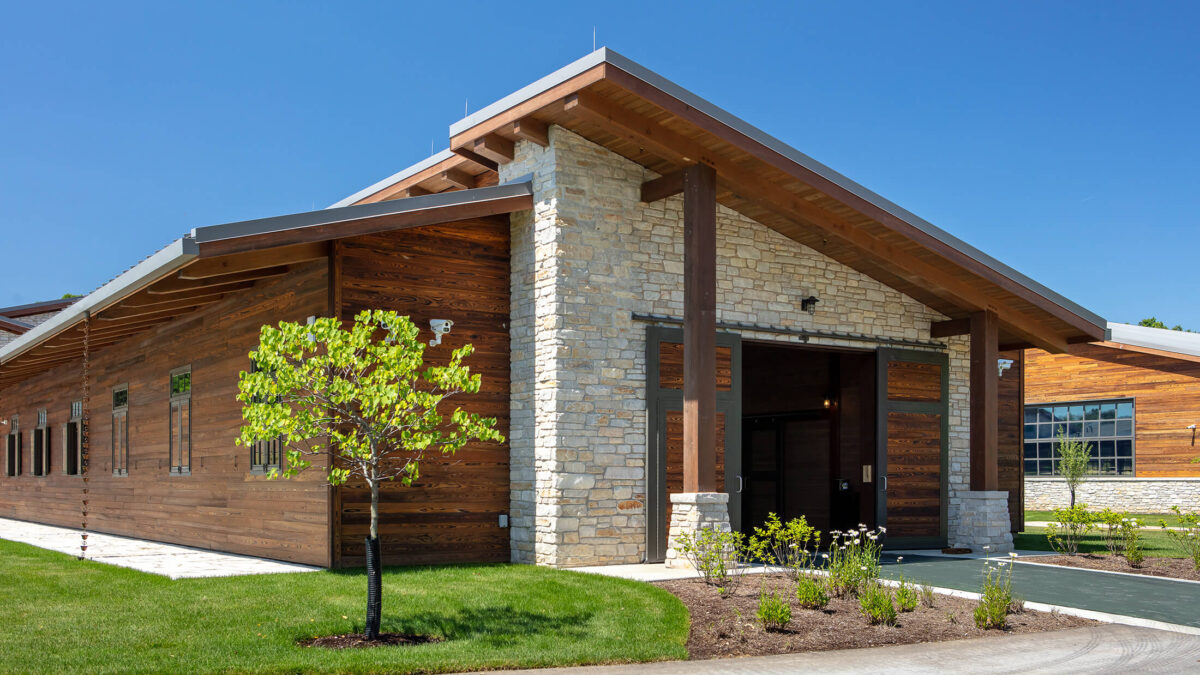Aisle doors are a great way to add interest to your barn because they come in a huge variety of designs, colors and details. Consider:
Width
The aisle doors need to be wide enough for a tractor to get through with a little room to spare for maneuvering. We recommend 12 ft at a minimum, or larger if possible.
Swelling/shrinkage
Wood doors can warp with humidity and moisture and deteriorate faster over time. Metal doors should be painted and powder coated over galvanized steel if possible.

Overhead rollers.
There are several different types of rollers. One is the cannonball but another is the flat bar roller (more “traditional” looking).
Ice protection
Barn doors in cold or snowy climates need some sort of ice and snow protection to prevent the roller apparatus from freezing up. Generally we specify some sort of snow shield across the top of the rail. It can be very simple but heavy sheet metal or a small roof structure that adds to the look of the barn. Also, you may need to access the rollers for adjustment during the year as the seasons change causing the doors to swell and becoming difficult to roll. The doors, especially steel doors, will expand and contract a small amount and you may want to adjust the rollers a couple times a year. So you need to provide access to the rollers to do that.
Light
Aisle doors typically have large glazed areas (tempered glass only) for adding natural light to the interior of the barn. The size and design depends on your aesthetic, but we typically locate these windows starting at roughly human shoulder height so you can see into the aisle when they’re closed. This is essential for convenience and safety. Someone could suddenly open a large door from the outside and spook a horse on the inside if they are unaware of what’s happening on the other side. Plus, some doors can be noisy as they open. We recommend making the glazed opening large but not too large so as to not give a loose horse the idea that it’s open and they can exit thru it. Adding some sort of mullions or design to the glazed portions can help prevent that from happening and also add to the overall design look. (See the second photo, of Pegaso Farm near Chicago.)
Inside or outside?
Aisle doors can also be mounted to the exterior surface of the barn or to the interior. If on the interior, a double wall system forming a pocket door is advisable. (Make sure the pocket can be cleaned occasionally.) Weatherstripping is usually not needed as we like to have our barns breathe, but you may want to provide some sort of cushioned rubber weather seal where the doors meet or a brush type seal at the jambs and sill to limit the cold winds and other debris from circulating into the barn.
Bottom guides
We recommend some sort of floor glide to keep the door in alignment. But that can be done in a variety of ways or left off entirely. We often provide a stop at the floor or at the top rail to prevent the door from sliding too far to the opposite side.
Never put locks on these doors! You may need them to open quickly in an emergency.
